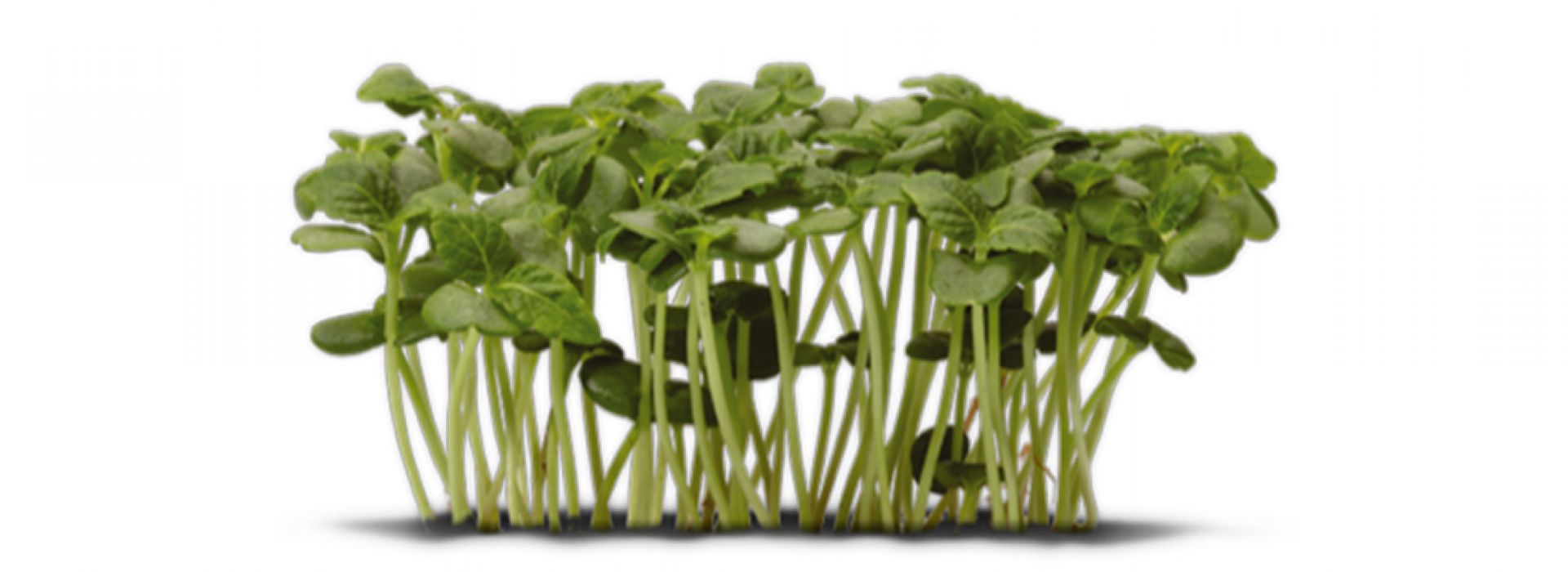.jpg)

Product Description
| Origin | Middle East |
| Taste | Oyster, cucumber |
| Usage | Fish, crustacean/ scallops, high tea sandwiches |
| Culture | Socially responsible culture with biological crop protection |
| Availability | Year round |
| Storage | Up to ten days at 2-4°C |
Taste and usage
Borage is a very well known herb, however, normally only the flowers or the dried parts of the leaves are used.
The full-grown leaf is simply too hairy to use in dishes.
Borage Cress only has the good parts from this beautiful herb.
The French even say that they can taste the flavour of a fresh oyster in Borage Cress.
They use the 'hûitres végétale', vegetable oyster.
It has a pleasant fragrance; the leaf is soft and crispy and offers lots of possibilities in use.
Borage Cress combines very well with fish but also does well in salads.
We found the use with steamed mussels a very surprising combination.
The fish-like taste of Borage Cress gives the dish an extra dimension.
Origin
The name originates from the Arabic word 'Abu Rache', 'Abu' means father and 'Rache' means sweating.
Eating Borage when being sick stimulates transpiration, thus speeds up the recovery process.
Used as tea, it is also supposed to help reduce headaches, fever and throat pains.
Availability and storage
Borage Cress is available year round and can easily be stored for up to ten days at a temperature of 2-4°C.
Produced in a socially responsible culture, Borage Cress meets the hygienic kitchen standards.
The product is ready to use, since it is grown clean and hygienically.
Borage Cress is, as all the Koppert Cress cresses and specialties, produced according to the SQF 2000 guidelines.
